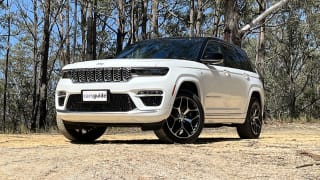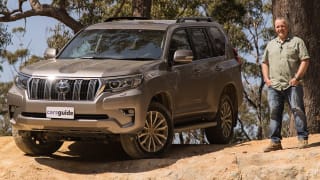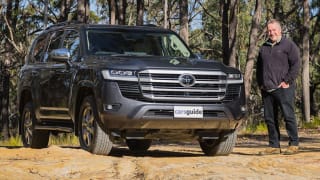Our ‘Gun Metallic’ test vehicle (one of four Warrior colours) is based on the well-appointed Patrol Ti model. It’s available only with the Patrol’s standard 5.6-litre petrol V8 and seven-speed automatic for a list price of $104,160.
That looks like a bargain compared to the top-shelf model in the LandCruiser 300 Series range, the Sahara ZX, which lists at $146,876.
The Warrior costs $16,260 more than a standard Ti and for that extra spend you get a generous package of unique and well-engineered upgrades.
Exterior changes include a distinctive black grille and door mirror caps, Warrior body decals and badging, Warrior-branded front bumper assembly and an eye-catching red Warrior-branded engine bash-plate.

There’s also 18-inch alloys with taller Yokohama 295/70 all-terrain tyres and a full-size alloy spare, black composite wheel arch flares, stainless steel bi-modal exhaust system with side-body outlet, rear bumper assembly with black valance panel and a bespoke 3.5-tonne towbar with two recovery points.
Although the engine and transmission are the same as a standard Patrol, the suspension has been significantly revised (see Design).
The Warrior adopts a classy and understated interior theme, featuring high-gloss piano black trim elements on the centre console and black Alcantara synthetic suede inlays on the dash (with subtle Warrior branding) and door trims.

The MY24 Warrior benefits from a recent and overdue upgrade of the Patrol's decade-old cabin technology (we tested the pre-upgrade model) resulting in a redesign of the console layout and functionality.
These include a 10.1-inch touchscreen for the six-speaker multimedia system offering the latest in digital radio, Apple CarPlay/Android Auto connectivity and Hema 4x4 navigation, plus wireless smartphone charging and USB-A and USB-C ports. Other technology upgrades include an ‘intelligent’ rear-view mirror and cool-box for the centre console.
By contrast, a foot-operated mechanical parking brake and large analogue speedo/tacho units are quaint reminders of the Y62’s longevity.






















